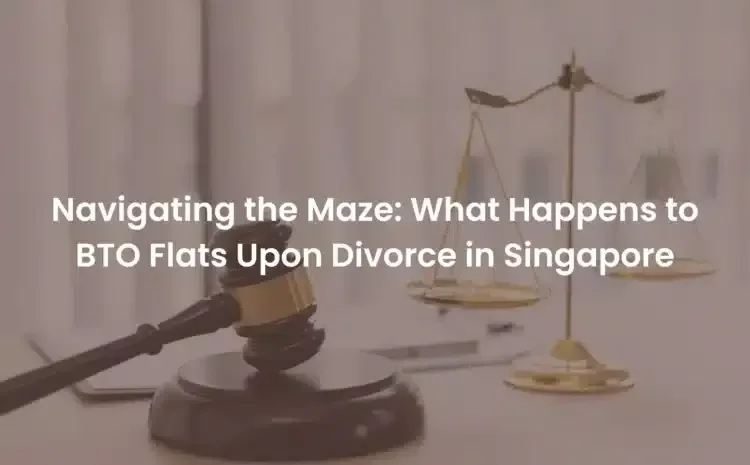Navigating the Maze: What Happens to BTO Flats Upon Divorce in Singapore
Introduction:
Divorce is a challenging and emotionally taxing process, and when it comes to the division of assets, one significant consideration for couples in Singapore is the fate of their Built-to-Order (BTO) flats. BTO flats are popular among newlyweds, but what happens to these homes when love takes an unexpected turn? In this blog post, we will explore the intricacies of BTO flats in the context of divorce in Singapore.
Understanding BTO Flats:
Built-to-Order flats are a cornerstone of Singapore’s housing policy, providing affordable housing options for newlyweds and first-time homeowners. These flats are sold at a subsidized rate to eligible couples, with the condition that they must occupy the unit for a stipulated period before they are allowed to sell or rent it out.
Division of BTO Flats Upon Divorce:
When a couple decides to divorce, the fate of their BTO flat becomes a pivotal concern. The Housing and Development Board (HDB) has specific rules and regulations in place to address the division of BTO flats in the event of a divorce.
Occupancy Period:
Couples are required to fulfill a Minimum Occupancy Period (MOP) before they are eligible to sell their BTO flat. The MOP is typically five years, and during this period, the couple must reside in the flat.
Transfer of Ownership:
If the couple decides to part ways before the MOP is completed, they cannot sell the flat immediately. However, the ownership can be transferred to one spouse, subject to certain conditions. The spouse retaining ownership must be a Singapore citizen and meet the eligibility criteria set by the HDB.
Selling the Flat:
After the MOP is fulfilled, the couple can choose to sell the flat. The proceeds from the sale will be divided between the ex-spouses based on their agreement or as ordered by the court.
Financial Implications:
Divorce can have financial implications on both parties, and it’s crucial to consider the outstanding mortgage, CPF contributions, and any accrued interest. Seeking legal and financial advice is advisable to navigate these complexities.
Housing Options Post-Divorce:
The ex-spouse who does not retain ownership of the BTO flat may need to explore alternative housing options. This could include renting a flat, applying for another BTO flat, or seeking private housing.
Conclusion:
Divorce is never easy, and the fate of shared assets, including BTO flats, adds another layer of complexity to an already challenging situation. Understanding the regulations set by the HDB and seeking professional advice can help couples make informed decisions about their homes and financial future. While the end of a marriage is undoubtedly a difficult journey, navigating the legal and financial aspects with clarity can pave the way for a smoother transition to the next chapter in life. Our lawyers have much experiencing handling issues in relation to divorces and BTO flats. Contact us at 8780-2499 to learn more.

